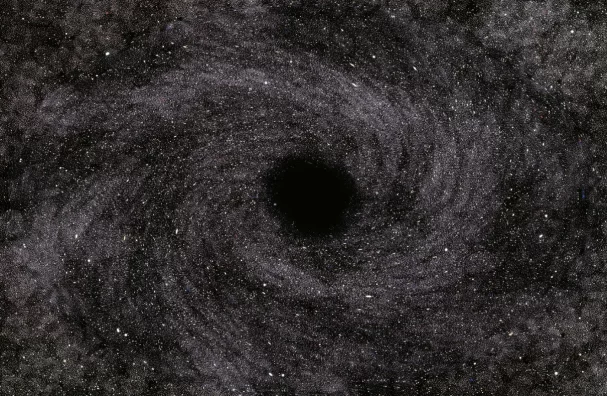
In an unexpected turn of events, astronomers from around the globe have stumbled upon the most massive black hole in the Milky Way galaxy. This discovery, made possible by the European Space Agency’s Gaia space observatory, has caused ripples in the scientific community, leading to a reevaluation of existing theories on star formation and growth.
While analyzing data from the Gaia space observatory, scientists made an inadvertent discovery – the largest dormant black hole in our galaxy, named Gaia BH3. This celestial entity is 33 times the mass of our Sun and has upended our understanding of the universe.
Black holes are regions in space where gravity is so strong that even light cannot escape. Typically, black holes are detected by the X-ray radiation they emit when interacting with nearby stars. However, dormant black holes, like Gaia BH3, are harder to detect as they don’t have nearby stars to interact with and hence, don’t emit light.
The detection of Gaia BH3 was made possible by observing a peculiar wobble in the orbit of an old giant star in the constellation Aquila. This wobble was induced by the star’s orbital motion around an invisible massive object – Gaia BH3. This black hole is less than 2,000 light-years from Earth, making it one of the closest known black holes of its size to our planet.
The discovery of Gaia BH3 is significant due to its rarity. Dormant black holes are elusive, and finding one with such a significant mass within our own galaxy is a rare occurrence. Gaia BH3’s discovery provides a unique opportunity for scientists to study these mysterious objects up close.
The Gaia space observatory, responsible for this accidental discovery, is an ambitious mission by the ESA to map our galaxy. The precise data collected is helping scientists discover black holes, and understand the structure and dynamics of the Milky Way.
The discovery of Gaia BH3 has opened up new avenues for research. It challenges the current understanding of the life cycle of massive stars and the conditions required for the formation of large black holes. Scientists are now re-evaluating their models and theories to accommodate the existence of Gaia BH3 and its implications for stellar evolution.
As we delve deeper into the vastness of space, discoveries like Gaia BH3 remind us of the mysteries of the universe and the endless possibilities for exploration. The sleeping giant has awakened a new curiosity among astronomers and will undoubtedly be the subject of intense study in the years to come.
